Orthodontics

Orthodontics corrects misaligned teeth and jaws such as overbites, underbites, crossbites, deep bites, crooked teeth. Appliances are used to assist in aligning and straightening teeth in order to not only improve appearance but improve a person’s bite and overall oral health. Good oral health helps to prevent many diseases and allows us to enjoy a healthy diet and feel good about ourselves when we smile.
Dental technology has improved over the years to include new options to help correct misaligned teeth and jaws, and there are a number of techniques and products available that were not available just a few short years ago. The patient experience has improved and today’s options are less conspicuous than the full metal braces that were common in the past. Although metal braces are still very commonly used, which choice works best for your child is a discussion to be had with your doctor at the time of consultation.
Common Orthodontic Conditions
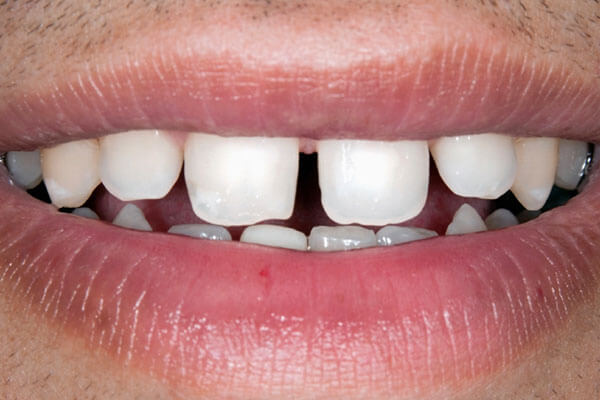 Gaps between the teeth allow food particles to more easily get stuck and can also cause abnormal jaw growth or gum recession.
Gaps between the teeth allow food particles to more easily get stuck and can also cause abnormal jaw growth or gum recession.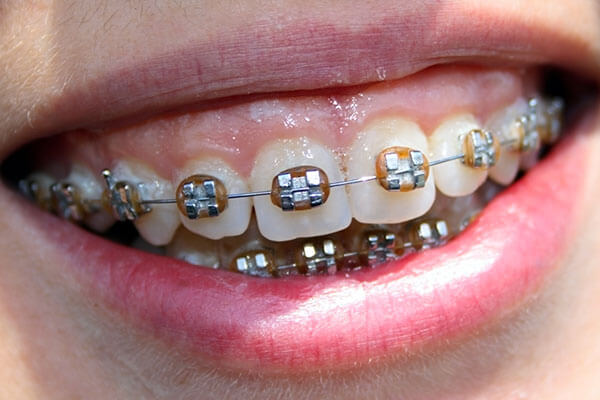 Overbite is the term used when the top teeth are too far forward to correctly make contact with the lower teeth. This can be caused by thumb or finger sucking or simply by genetics or specific bone development patterns. This condition can lead to temporomandibular joint( TMJ) problems (causing pain in the jaw) or cause unhealthy wear patterns in the teeth.
Overbite is the term used when the top teeth are too far forward to correctly make contact with the lower teeth. This can be caused by thumb or finger sucking or simply by genetics or specific bone development patterns. This condition can lead to temporomandibular joint( TMJ) problems (causing pain in the jaw) or cause unhealthy wear patterns in the teeth.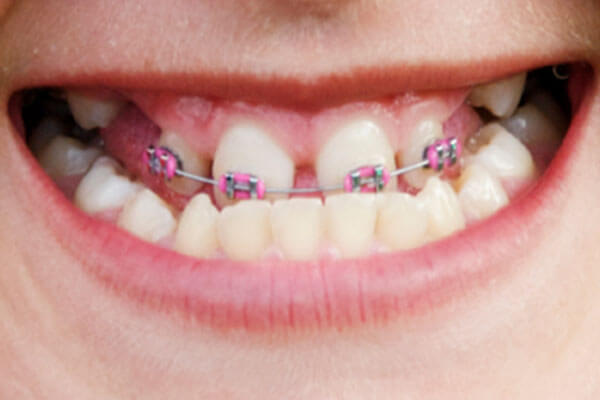 An underbite is the term used when the lower teeth are further forward than the upper teeth. It can be caused by irregular jaw growth in either the upper or lower jaw or both. Missing upper teeth can also contribute to the development of an underbite. This condition can lead to Temporomandibular joint problems (pain in the jaw) or cause unhealthy wear patterns in the teeth.
An underbite is the term used when the lower teeth are further forward than the upper teeth. It can be caused by irregular jaw growth in either the upper or lower jaw or both. Missing upper teeth can also contribute to the development of an underbite. This condition can lead to Temporomandibular joint problems (pain in the jaw) or cause unhealthy wear patterns in the teeth.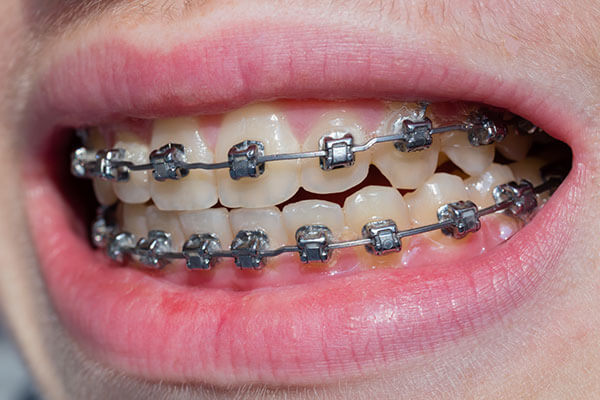 In a healthy bite, the outside ridge of the lower teeth will make contact with the middle of the upper teeth. A crossbite occurs when some of the lower teeth edges are outside of the upper teeth edges. This can be the result of the upper and lower jaws being misaligned. This condition can cause unhealthy wear patterns on the teeth, gum disease, and bone loss.
In a healthy bite, the outside ridge of the lower teeth will make contact with the middle of the upper teeth. A crossbite occurs when some of the lower teeth edges are outside of the upper teeth edges. This can be the result of the upper and lower jaws being misaligned. This condition can cause unhealthy wear patterns on the teeth, gum disease, and bone loss.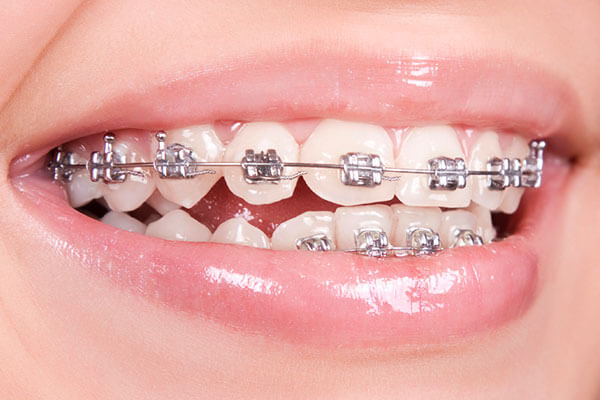 Open bite describes the condition that occurs when several upper and lower teeth are unable to make contact with each other. This can be caused by thumb or finger sucking or simply by genetics or specific bone development patterns. An open bite can make it difficult (or even painful) to bite or chew and can sometimes interfere with speech. This condition can also lead to issues in the joints of the jaws.
Open bite describes the condition that occurs when several upper and lower teeth are unable to make contact with each other. This can be caused by thumb or finger sucking or simply by genetics or specific bone development patterns. An open bite can make it difficult (or even painful) to bite or chew and can sometimes interfere with speech. This condition can also lead to issues in the joints of the jaws.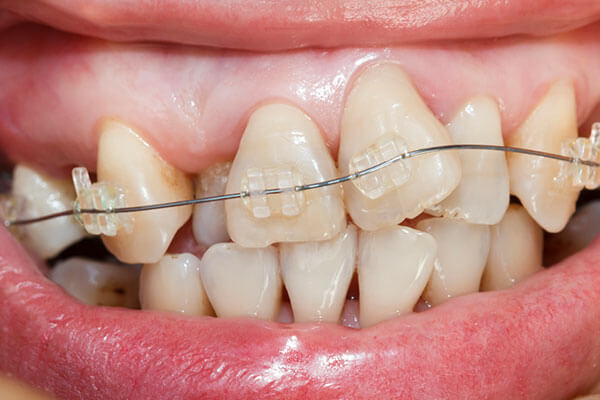 Overcrowding occurs when there is not enough space in the mouth for all of the teeth to fit with correct alignment. There are several ways this condition may be treated but it is important to treat because crowded or crooked teeth can make it difficult to brush and floss to maintain oral health. Failure to correct crowded teeth may result in increased gum disease and tooth decay. Crowded teeth may become more crooked over time.
Overcrowding occurs when there is not enough space in the mouth for all of the teeth to fit with correct alignment. There are several ways this condition may be treated but it is important to treat because crowded or crooked teeth can make it difficult to brush and floss to maintain oral health. Failure to correct crowded teeth may result in increased gum disease and tooth decay. Crowded teeth may become more crooked over time.Types of Appliances
 Metal braces made from stainless steel brackets and wires remain the most popular choice for braces and are very effective.
Metal braces made from stainless steel brackets and wires remain the most popular choice for braces and are very effective. Virtually invisible, there are several advantages clear brackets have over traditional braces and aligners. Clear braces combine tieless braces with high technology archwires that are clinically proven to move teeth fast and comfortably.
Virtually invisible, there are several advantages clear brackets have over traditional braces and aligners. Clear braces combine tieless braces with high technology archwires that are clinically proven to move teeth fast and comfortably.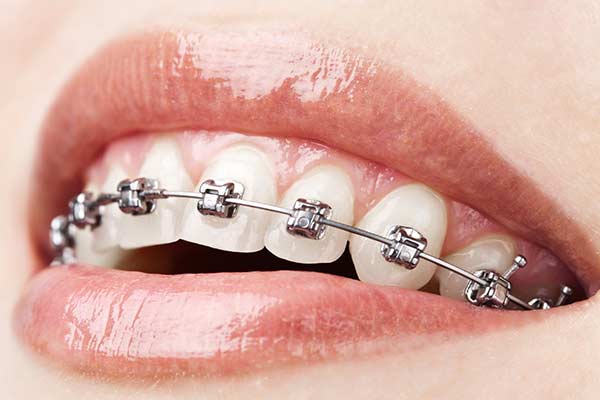
The primary difference is that they do not use elastics or metal ties to connect the archwire to the brackets. There are several potential benefits to choosing self-ligating brackets if it is determined that they are a good option for your treatment.
- Aesthetics – Self-ligating brackets may appear smaller than traditional brackets.
- Cleaning – The absence of elastics and ties can make it easier for patients with self-ligating braces to keep their teeth and braces clean, although special care and attention to daily cleaning is important with any type of orthodontic treatment.
- Appointment Time – Adjustment appointments are often shorter with this efficient system due to the specialized brackets that hold the archwire within the bracket.
- Treatment Time – Overall treatment time with self-ligating orthodontic brackets is often shorter than that of traditional metal braces.
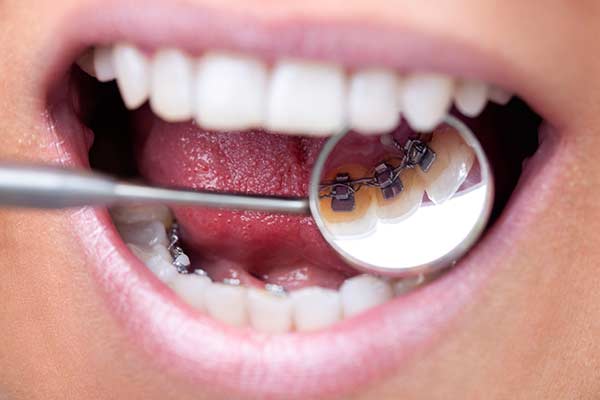 Lingual braces are a good option for professionals or for anyone who prefers not to have the braces visible. Lingual braces are placed behind your teeth so that you get the same effective tooth alignment to create a beautiful smile, without everyone realizing you have braces.
Lingual braces are a good option for professionals or for anyone who prefers not to have the braces visible. Lingual braces are placed behind your teeth so that you get the same effective tooth alignment to create a beautiful smile, without everyone realizing you have braces. This advanced system uses a custom-made series of aligners created. These aligner trays are made of smooth, comfortable, and virtually invisible plastic that you wear over your teeth. Wearing the aligners will gradually and gently shift your teeth into place, based on the exact movements your orthodontist plans out for you. There are no metal brackets to attach and no wires to tighten. You just pop in a new set of aligners approximately every two weeks, until your treatment is complete. You’ll achieve a great smile with little interference in your daily life. The best part of this process is that most people won’t even know the teeth are being straightened and it allows for better oral hygiene that benefits oral health.
This advanced system uses a custom-made series of aligners created. These aligner trays are made of smooth, comfortable, and virtually invisible plastic that you wear over your teeth. Wearing the aligners will gradually and gently shift your teeth into place, based on the exact movements your orthodontist plans out for you. There are no metal brackets to attach and no wires to tighten. You just pop in a new set of aligners approximately every two weeks, until your treatment is complete. You’ll achieve a great smile with little interference in your daily life. The best part of this process is that most people won’t even know the teeth are being straightened and it allows for better oral hygiene that benefits oral health.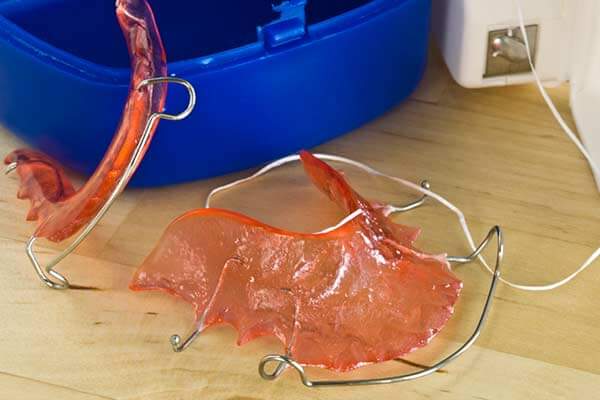
Your orthodontist will go over the options with you and provide specific instructions on the use of your retainers.
Additional Orthodontic Information
- You may be salivating more than usual. This is because your body detects foreign objects in your mouth (i.e. your braces). Although this can last up to a few hours, usually the body adjusts within about 20 minutes.
- The braces will feel strange to your lips and tongue. You can wiggle your lips or feel around with your tongue to get used to them. After a few days, your mouth will adjust.
- It is fine to eat right after you leave our office. However, it is advisable to eat softer foods for the first few days as you get used to eating with your new braces.
- There are some foods that are never okay to eat while wearing braces. Avoid eating hard or sticky foods during your orthodontic treatment, and never chew on ice as it can damage both your teeth in addition to your braces. These foods can damage your braces, causing you to need additional appointments and potentially extending your overall treatment time. Be sure to follow all guidelines you receive from your dentist’s office.
- If spots on your cheek become particularly irritated, you can place dental wax over the bracket in the area to allow the tissue to heal.
- Brush your teeth at least twice a day – after breakfast and after dinner. For the first few days, check your braces in the mirror after brushing to ensure that you have removed all food particles. For a child with braces, it can be helpful for an adult to check the braces after the child brushes just to make sure that the braces have been cleaned thoroughly. There may be one or two spots that the child might frequently miss, and if these are identified right away, the child can develop good, thorough brushing habits from the start.
- Most patients are only sore for a few days following the placement of braces and do not need medication for pain. If soreness is a problem, however, you can take a non-steroidal anti-inflammatory (such as Advil or Motrin) as long as you do not have any allergies to these types of medicine.
Remember to do these four things at every appointment to help your treatment go as quickly and comfortably as possible.
Wire Check
Use your tongue to check all around and make sure there are no wires poking out that could cause discomfort.
Instructions Check
Following the instructions we give you at each appointment is a very important part of your orthodontic treatment. If you follow instructions, your treatment can move along much more quickly than if you do not do your part. Make sure you know what you need to do to follow all instructions to be ready for your next appointment. These may include directions about your elastics or headgear wear, expander adjustment or how to clean your orthodontics, or how to eat. ASK QUESTIONS if you are not exactly sure about what you need to do or how to do it.
Make sure you have enough of the supplies you will need. This includes dental wax, elastic bands, or anything else you might need for your braces or device.
Supply Check
Make sure you have enough of the supplies you will need. This includes dental wax, elastic bands, or anything else you might need for your braces or device.
Appointment Check
Make sure you know when your next appointment is, and be sure that it is scheduled before you leave our office. Waiting too long between appointments will cause your orthodontic treatment period to be longer than necessary.